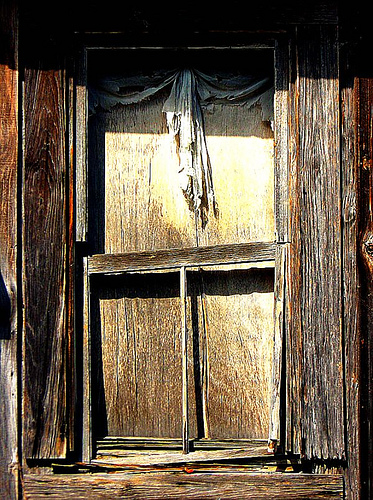A Brief History Of Curtains
January 28th, 2009 by admin In all likelihood, somewhere in a Neanderthal cave, the lady of house figured out that the elements posed a problem and used animal hide to cover open portals of light. Animal hide, fur and membrane are the ancestors of today’s curtains used in numerous window treatments.
In all likelihood, somewhere in a Neanderthal cave, the lady of house figured out that the elements posed a problem and used animal hide to cover open portals of light. Animal hide, fur and membrane are the ancestors of today’s curtains used in numerous window treatments.
Over time, curtains on windows, doors and showers areas became a necessity. Curtains have been used on old sailing ships, covered wagons and log cabins. Colorfully painted wooden Gypsy wagons were adorned with small windows covered in dainty curtains.
North American native Indians stretched hide for tents. Doors of these tents were fashioned into a curtain flap for entering and exiting. But, the flap also served the purpose of keeping out dust, insects and bad weather elements.
With the advancement of cultures and elevation of societies, curtains evolved into an ornamental window treatment. Long cross pane windows in castles and homes of lesser royalty were adorned with exquisite drapery in elegant fabric like velvet, organdy or finest lace. Belgium and Ireland produced the finest handcrafted lace for curtains.Even in the bedroom, curtains had their function. Bed curtains attached by rings to a square or round frame high above the bed were considered a necessity for centuries in Scandinavian and European countries. Most bed curtains were made from more serviceable materials like cotton or dimity. In tropical climates, curtains were used as a protection from sudden dust storms and insects. In the Orient, seductive beaded curtains, made from colored glass and hung vertically, or those made from bamboo cane added to the mystique and allure of a room. In other Oriental countries, gossamer materials in brilliant fuschia, purple or green served as curtains for harems, throne rooms and bedrooms.
Curtains had been designed with a pocket sewn on the inner side through which a rod could then be inserted. Often, a cornice, a decorative wood covering was added to a window above the curtain rod. Europeans preferred a combination of curtain and drape, no doubt as a hedge against the cold and damp weather. Certain styles of curtains were identified with social status as well as by the costly materials brought by traders in the Far East or other exotic areas. Huge bolts of finest materials were brought aboard ships and sent across the seas to be sold.
As time passed, curtains diversified into various styles such as pinch-pleated draperies, tab-pleated, swag and smocked, until the present time that has as many styles in curtains, rods, valances and ornamental cornices and accessories such as curtain tie-backs with tassles and fringe. In primitive times, curtains were simply attached to a window using sticky sap. As curtain sophistication grew, curtain rods were made from hand-hewn wood, usually oak, birch or similar hardwoods. Some rods are still constructed of wood, although most are metal or synthetic material. Beaded curtains are still quite popular for special room accents. Bed curtains have been replaced by four-poster beds with an overhead canopy. Bamboo curtains are another popular window treatment used in many enclosed patios, sun rooms, conservatories and for special effects in bedrooms, living rooms and kitchens.
Down through history, curtains have remained singularly useful for any decor. Though curtain styles change through trends and new innovations in design, curtains still serve the purpose for which they were originally intended: protection from overexposure to sun and drafts. Yet, curtains also give any room a finishing touch. The Neanderthal lady of the cave would certainly be pleased with such a wide range of styles, designs and materials from which to choose.





 0
0